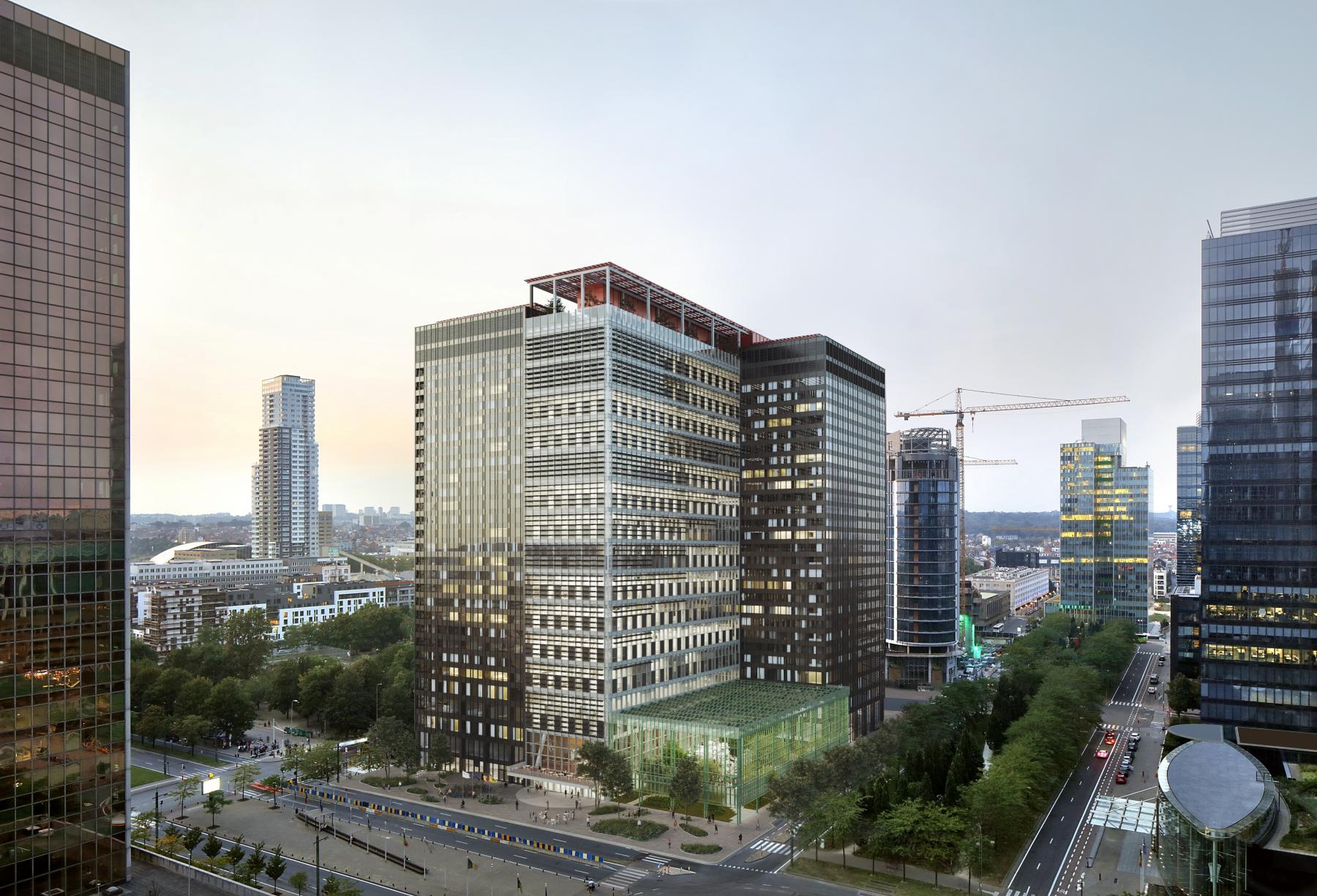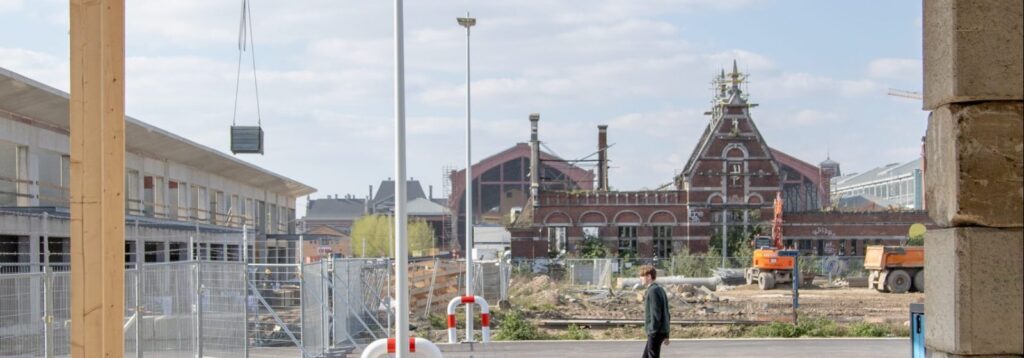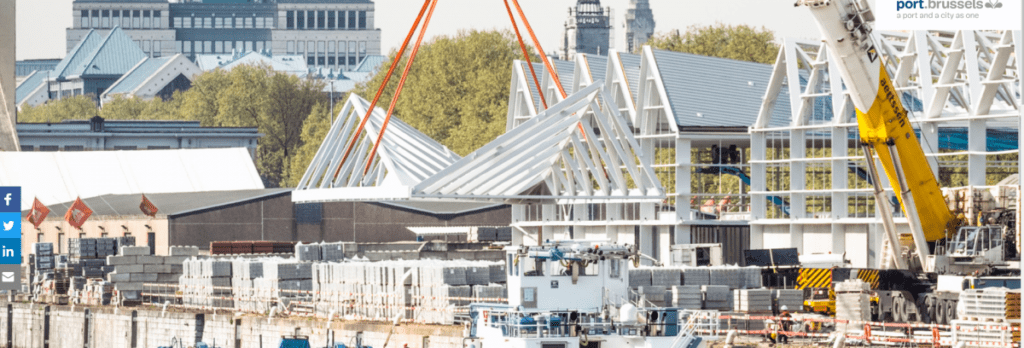Last year, the Brussels skyline saw two of its iconic buildings melt away like snow in the sun. But the plan is to bring them back in an even bigger way. The mythical WTC towers may have been demolished, but they are far from gone. This, in a nutshell, is the fantastic ZIN-wharf, a circular architectural project in which the Port of Brussels is closely involved.
The future of the two WTC towers, symbols of 1970s architecture, looks promising. This is thanks to an exciting project by Befimmo, using the latest renovation techniques and focusing on sustainability and circularity. In fact, the towers will not be demolished, but completely rebuilt. The demolition – only the central core of the two buildings will be preserved – is a huge site: 110,000 m2 above ground, including 75,000 m2 of offices, but also co-working spaces, apartments, a hotel and spaces for sport, leisure, commerce and catering. ZIN brings together different functions (living, working, living) under one roof in a particularly innovative way. The Flemish government has already rented all the office space.
Philippe Matthis, deputy director of the Port of Brussels, does not hide his enthusiasm: “ZIN is an important project for Brussels, not only architecturally but also economically. Indeed, it is designed to meet Brussels’ ambitions in terms of a circular and sustainable economy (65% of the existing materials will be preserved and reused). The Port of Brussels is literally lending a hand to this ambitious project. Three port companies are joining forces to implement this innovative concept of “circular construction”.
Sustainable logistics
In accordance with its management contract, the Port of Brussels is committed to implementing concrete measures for a sustainable development model, in line with the objectives of the Brussels government. Several of the port’s 200 concessionaires are directly involved in ZIN.
De Meuter
De Meuter, expert in earthworks and demolition at the port site, is collecting the old concrete from the WTC site. The debris is stored and crushed. New concrete for the yard is made from this recycled material. This reduces waste and environmental impact.
CCB Cement Company
Cement Company CCB, located in the Vergote Dock, recovers aggregates from De Meuter and is responsible for producing and transporting new, high quality concrete. This new mix will be used to renovate the two WTC towers. Back to sender, so to speak. Incidentally, CCB has been awarded a silver certificate by the Concrete Sustainability Council (CSC) for its recycled concrete, of which it will produce 21,000 m3 for ZIN.
Shipit
Shipit, a company specialising in barge transport and storage, recovers and stores the concrete slabs removed from the towers, especially the old roofs and terraces. These are processed on site and then returned to the yard for the reconstruction phase. Shipit, based at the SOC Vergote and soon to be based at Biestebroeck, has also launched a pilot project: a consolidation centre linked to site logistics, the Brussels Construction Consolidation Centre.
Green transport
These practical examples from the ZIN adventure show that the Port of Brussels is positioning itself more than ever as a facilitator of sustainable logistics, especially for the construction sector. Some 20 concessionaires at the port are now active in the circular economy. BC Materials, for example, recovers and recycles excavated earth and construction soil into new building materials.
The port is a sustainable and environmentally friendly solution for storage, logistics and mobility. Transport by ship is less polluting than transport by road. It also prevents Brussels’ roads from becoming congested with lorries. In 2020, more than 6.6 million tonnes of goods will be transported by canal. The equivalent of 621,000 fewer lorries and 96,000 tonnes less CO2 emissions on the roads of Brussels.
This article first appeared (in Dutch) on Port of Brussels – News May 26, 2021.
Image credit: Port of Brussels



